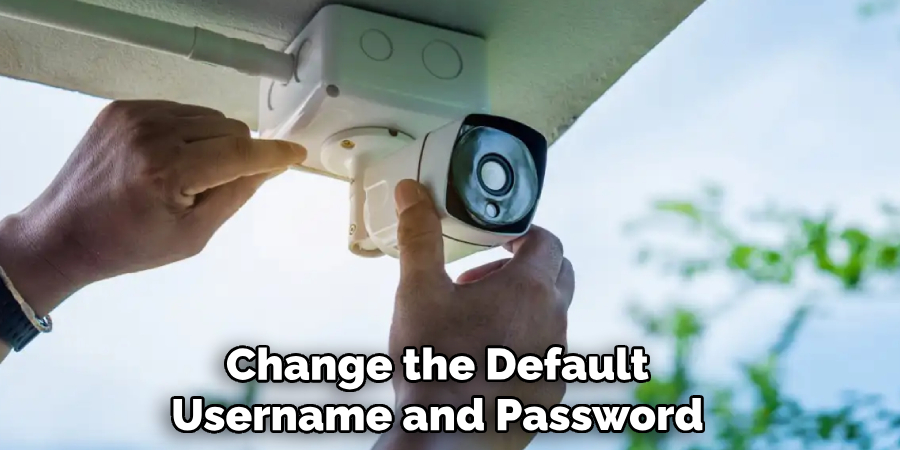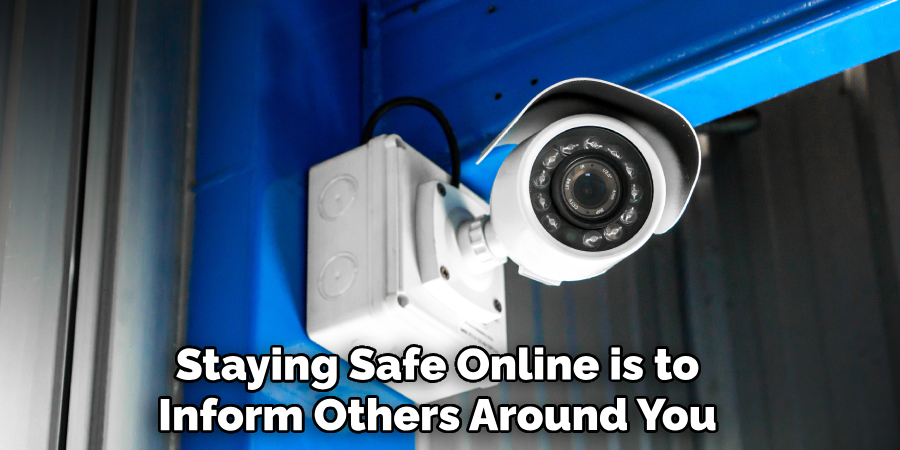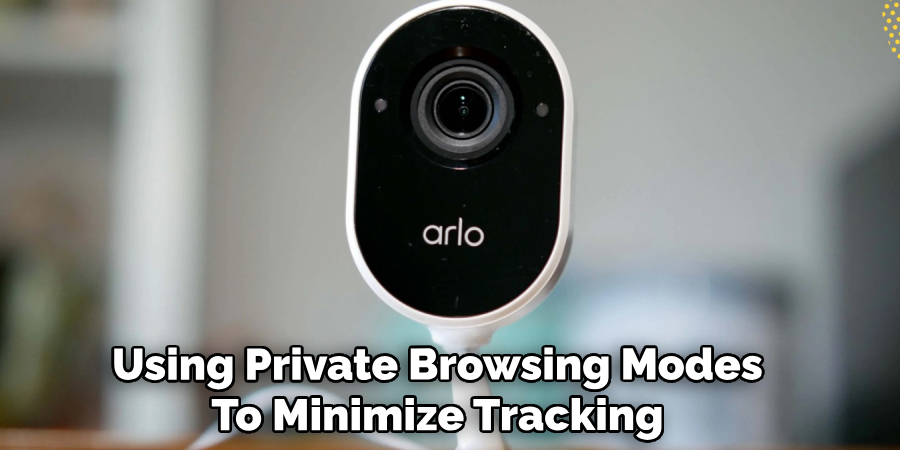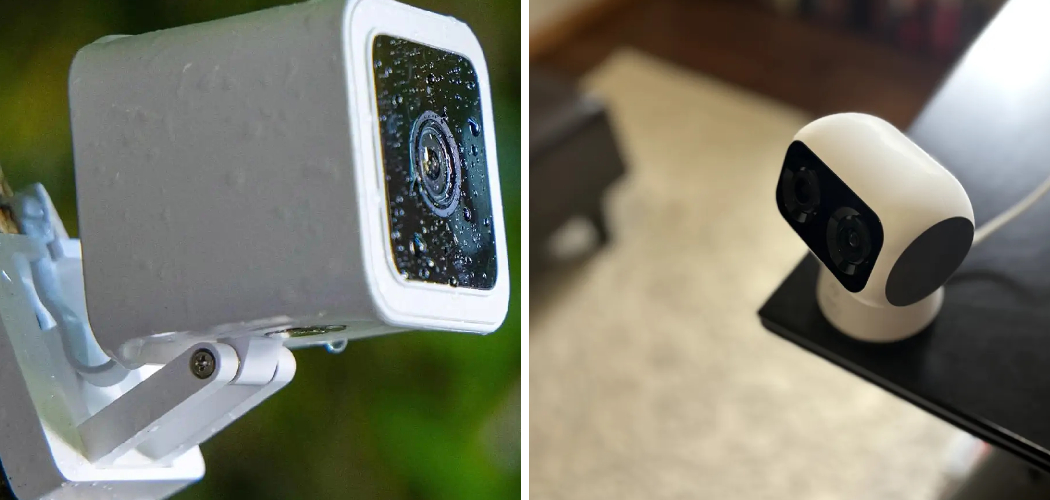Are you concerned about the security of your home or business’s Wi-Fi cameras? With the rise of smart home devices, including wifi cameras, protecting them from potential hackers is more important than ever.

WiFi cameras have become integral to home and business security, providing convenience and peace of mind through remote monitoring. However, as these devices connect to the internet, they can also become targets for hackers looking to exploit vulnerabilities. Protecting your WiFi camera from unauthorized access is essential to safeguarding your privacy and sensitive data.
This guide on how to protect wifi camera from hackers will explore practical steps and best practices to ensure the security of your WiFi camera and protect it from potential cyber threats.
What Are the Benefits of Using WiFi Cameras?
Before diving into security measures, it’s essential to understand the advantages of using a WiFi camera. Here are some benefits that make them a popular choice among homeowners and businesses alike:
- Easy Installation: One of the most excellent perks of WiFi cameras is their simple setup process. Most models come with easy-to-follow instructions; you can typically connect them to your home network within minutes.
- Remote Access: With WiFi cameras, you can monitor your property from anywhere if you have an internet connection. This feature lets you watch your home or business even when you’re away.
- Cost-effective: Compared to traditional wired cameras, WiFi cameras are often more affordable and require minimal installation costs. This makes them an excellent option for those on a budget or looking to add extra security without breaking the bank.
- Flexibility: WiFi cameras are also incredibly versatile as they can be placed virtually anywhere within your home or business, as long as there is a strong WiFi signal. This allows you to customize the placement of your cameras based on your specific needs and preferences.
- Real-time Alerts: Many WiFi cameras come with motion detection technology that will send real-time alerts to your smartphone or other devices when activity is detected. This feature enables you to respond quickly to any potential intruders or emergencies.
What Will You Need?
- WiFi Network: As the name suggests, WiFi cameras require a stable WiFi network to function properly. Before purchasing a WiFi camera, ensure your home or business has a strong and reliable WiFi signal.
- Power Source: Most WiFi cameras need to be plugged into a power source to operate. This can be done using an outlet or through USB ports on devices such as routers or laptops.
- Smartphone or other Device: To fully utilize the features of your WiFi camera, you will need a smartphone or other device with internet access. This will allow you to receive real-time alerts and remotely access the camera’s live feed.
8 Easy Steps on How to Protect Wifi Camera From Hackers
Step 1: Change the Default Username and Password:
Changing the default username and password is one of the most crucial steps in securing your WiFi camera against potential hacking attempts. Many WiFi cameras come with standard, pre-set credentials that are widely known or readily accessible to hackers.

Leaving the default username and password unchanged increases the risk of unauthorized access to your device. To strengthen security, create a unique password that combines uppercase and lowercase letters, numbers, and special characters. Avoid using easily guessable information like names, birthdays, or common words.
Additionally, if the device allows, update the username to something uncommon, as this adds an extra layer of protection against brute force attacks. Store your new credentials securely and consider using a password manager for convenience and safety.
Step 2: Enable Two-Factor Authentication
Two-factor authentication (2FA) adds an essential layer of security to your device and accounts. By requiring a second verification form, such as a one-time code sent to your phone or generated by an authentication app, 2FA ensures that even if your password is compromised, unauthorized access is much less likely.
To enable 2FA, check your device or account settings for the security options, then follow the setup instructions provided. Use authentication apps rather than SMS codes when possible, as they are generally more secure.
Step 3: Keep Your Software Up-to-Date
Regularly updating your software, including operating systems, browsers, and apps, is essential. These updates often include security patches that fix any previously known vulnerabilities.
Hackers are constantly finding new ways to exploit weaknesses in software, so it’s crucial to stay one step ahead by keeping your devices and applications up-to-date.
In addition to security patches, software updates may include new features or improvements that can enhance your overall experience. So not only will you be keeping yourself safe from potential cyber attacks, but you’ll also be getting the most out of your technology.
Enable automatic updates in your device settings to ensure that your devices and apps are automatically updated with the latest versions. This way, you won’t have to worry about manually checking for updates and downloading them yourself.
Step 4: Regularly Back Up Your Data

Backing up your data is important in protecting yourself from cyber attacks. If you become a victim of a cyber attack, having recent data backups can help you recover quickly and minimize any potential damage.
Several methods for backing up your data include external hard drives, cloud storage services, and network-attached storage. Having more than one backup method is recommended in case one fails or becomes compromised.
It’s also important to regularly test your backups to ensure they are working correctly and can be easily restored if needed. Consider setting up automatic backups so you don’t have to remember to do it manually.
Step 5: Use Strong Passwords
Using strong passwords is one of the most crucial steps to protect your accounts and information from unauthorized access. A strong password should be unique, complex, and difficult to guess. Ideally, it should mix uppercase and lowercase letters, numbers, and special characters.
Avoid using easily guessable information like birthdays, names, or common words. Instead, consider using a passphrase—an easy-to-remember combination of random words.
To further enhance security, use a different password for each account so that your other accounts remain secure if one password is compromised. Password managers can be incredibly helpful in generating and securely storing complex passwords without remembering them all. Regularly update your passwords, especially if you suspect they may have been exposed.
By incorporating these practices, you significantly reduce the risk of cyber threats and enhance the overall security of your digital presence.
Step 6: Keep Learning and Stay Informed
Cybersecurity is constantly evolving, with new threats and vulnerabilities being discovered every day. It’s crucial to stay informed and continue learning about best practices for staying safe online.

One great way to do this is by following reputable sources such as security blogs, news websites, and social media accounts that regularly share updates on the latest cyber threats and ways to protect yourself.
Additionally, consider taking online courses or attending workshops on cybersecurity. This will not only help you understand the technical aspects of cybersecurity but also give you practical tips for maintaining your digital security.
Step 7: Inform Others
Another important aspect of staying safe online is to inform others around you. This includes friends, family members, and colleagues who may not be as tech-savvy or aware of the potential risks online. Share your knowledge and tips with them so they can also take steps to protect their online presence.
You can also educate younger individuals, such as children or students, about cybersecurity through interactive activities or workshops. We can create a safer digital environment by spreading awareness and educating others.
Step 8: Browse Securely
One of the most effective ways to browse securely is using a trusted and up-to-date web browser. Modern browsers often include built-in security features such as phishing protection, sandboxing, and warnings for potentially dangerous websites. However, you should also consider enabling additional safety measures like clearing cookies regularly or using private browsing modes to minimize tracking.
Another vital aspect of secure browsing is using strong, unique passwords for all your online accounts. Pair this practice with a reliable password manager to store and manage your credentials safely. Additionally, enable two-factor authentication (2FA) to add an extra layer of security.
By following these practices, you can significantly reduce the risk of falling victim to cyber attacks and protect your personal information while browsing the internet.

Conclusion
How to protect wifi camera from hackers, it is essential to implement a combination of best practices.
Start by setting a strong, unique password for your camera, avoiding default credentials that can be easily exploited. Regularly update your camera’s firmware to ensure you have the latest security patches. Ensure your home network is secured using a strong WiFi password and enabling network encryption, such as WPA2 or WPA3. Limit the number of devices connected to your network and consider setting up a separate network for your smart devices.
Additionally, disable remote access features unless necessary, and always use two-factor authentication if it is supported. By taking these precautions, you can significantly enhance the security of your WiFi camera and protect it from unauthorized access.

